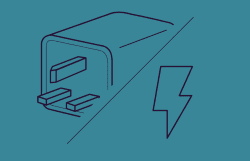Microgrids and energy projects are becoming increasingly popular as a way to provide reliable and renewable energy solutions. With the help of microgrids, communities can become more self-sufficient and better prepared for power outages or other disruptions in the power supply. Microgrid case studies can provide valuable insight into how these systems work, what their benefits are, and how they can be applied to different situations. In this article, we will explore some of the applications of microgrids and energy projects, as well as look at some successful microgrid case studies that have been implemented around the world. We will also discuss the challenges associated with implementing microgrid projects and what potential solutions may exist. With this information, readers should have an improved understanding of how these systems operate and their potential to make a positive impact on our energy landscape.
How do microgrids work?
Microgrids are an increasingly popular solution for meeting the energy needs of communities and businesses. They are decentralized power systems that can operate independently or in conjunction with the traditional grid. This means that they can generate, store and distribute electricity from renewable energy sources such as solar, wind, and hydro, as well as fossil fuels such as natural gas or diesel.
Microgrids are designed to provide sustainable and resilient power to communities that may not have access to reliable electricity from the grid, or to businesses that require a continuous and high-quality power supply. They can also reduce greenhouse gas emissions and provide cost savings compared to traditional grid-connected power.
Many microgrid case studies have shown the effectiveness of this technology in improving energy efficiency, reducing carbon emissions and providing reliable power. One example of a successful microgrid project is the implementation of a 10 MW microgrid in Nigeria that has helped provide access to electricity to rural communities. Another example is the installation of a 1 MW solar microgrid at the headquarters of a company in Hong Kong, which has reduced their reliance on fossil fuels and helped them to reduce energy costs.
The implementation of a microgrid can involve several components, such as energy resources, energy storage, distribution, and control systems. The design of a microgrid must take into account the energy needs of the community or business, the environmental conditions, and the available renewable energy resources. The microgrid must be scalable and designed to support future growth and changes in energy demand.
To ensure a reliable power supply, microgrids often incorporate energy storage systems such as batteries, which can be charged when there is excess power and discharged when there is a demand. Microgrids may also include a combination of distributed energy resources such as generators, solar panels, and combined heat and power (CHP) systems to provide a variety of power sources and to ensure resilience in case of power outages or extreme weather events.
Case studies of energy companies using microgrids
A great case study of how microgrids are being used is the Isle of Eigg, which is a small Scottish island that has implemented a renewable energy microgrid to supply electricity to its residents. The microgrid consists of a combination of wind turbines, solar panels, and a battery storage system, which allows the island to operate independently of the mainland grid. The project was implemented by the Scottish government and cost approximately £1.6 million.
Another UK case study is the Plymouth Marine Energy Supply Chain project, which uses a microgrid to provide electricity to a research and development facility for marine renewable energy technology. The microgrid consists of a combination of solar panels, battery storage, and a combined heat and power system, which allows the facility to operate off-grid and reduce its carbon emissions.
In addition, the Orkney Islands in Scotland have several microgrid projects, including the European Marine Energy Centre’s tidal energy test site and the HyDIME project, which uses a microgrid to power a hydrogen fuel cell. These projects help to promote the use of renewable energy and reduce the island’s reliance on fossil fuels.
Microgrid challenges and how to solve them
Microgrids offer a range of benefits, including improved reliability, resiliency, and energy efficiency. However, implementing a microgrid is not without its challenges. Some of the most significant challenges include:
-
Cost: Microgrid systems can be expensive to install and maintain. The upfront capital costs can be high, and ongoing operational expenses can also be significant.
-
Complexity: Microgrids can be complex systems that require significant engineering and design expertise. Integrating different renewable energy sources, energy storage, and backup generation systems can be challenging.
-
Regulatory Hurdles: Regulations can be a significant barrier to the development and deployment of microgrids. This includes grid interconnection and permits, which can vary by jurisdiction and be costly and time-consuming.
-
Technical Compatibility: Integrating microgrid systems with the existing power grid can be technically challenging. Microgrid systems need to be compatible with the grid to ensure that power quality and reliability are maintained.
-
Scalability: Microgrids are designed to be scalable, but their design and implementation can be challenging. As the size of the microgrid increases, the complexity of the system also increases.
To overcome these challenges, a combination of regulatory, technical, and financial strategies can be employed.
-
Government and private sector financing: To make microgrid projects more financially feasible, private companies and governments should provide financing and incentives to offset the high capital costs. This can include low-interest loans, grants, and tax incentives.
-
Regulatory Streamlining: Governments should streamline the regulatory process to make it easier to install and maintain microgrid systems. This can include standardized interconnection procedures and permits.
-
Standardized design and engineering: Microgrid systems can be simplified and made more affordable through standardized designs and engineering practices. This can help reduce costs and increase scalability.
-
Demand-side management: Microgrids can be used to better manage energy demand by implementing smart grid technologies and energy efficiency measures. This can help reduce the size and cost of the microgrid.
-
Collaboration: Microgrid developers, utilities, and governments need to collaborate to ensure that microgrid systems are integrated into the existing power grid effectively. This includes ensuring that technical compatibility issues are resolved and that regulatory hurdles are minimized.
How to successfully implement microgrids?
Successfully implementing a microgrid requires careful planning, design, and execution. Here are five tips to help ensure a successful microgrid implementation:
-
Conduct a thorough feasibility study: Before embarking on a microgrid project, it is important to conduct a feasibility study to determine whether the project is viable. This study should assess factors such as the community’s energy needs, the available renewable energy resources, the existing power infrastructure, and the regulatory framework governing microgrids in the area. A thorough feasibility study can help identify potential obstacles and opportunities, as well as guide the project’s design and implementation.
-
Design the microgrid for scalability: Microgrids should be designed with scalability in mind. As energy needs grow and new technologies emerge, the microgrid should be able to expand to meet those needs. This may involve incorporating modular components into the design, such as solar panels or battery storage units, that can be easily added or removed as needed.
-
Prioritize safety and reliability: Safety and reliability should be the top priorities when designing and implementing a microgrid. This includes ensuring that the microgrid meets all safety standards and regulations, and that it is designed to withstand extreme weather events and other potential disruptions. Robust testing and maintenance programs should also be established to ensure that the microgrid continues to operate safely and reliably over time.
-
Foster community engagement: Microgrids are often implemented in communities that are off-grid or underserved, and it is important to engage with these communities throughout the planning and implementation process. This includes educating community members about the benefits of the microgrid, as well as soliciting feedback and addressing concerns. Community engagement can help build support for the project, increase its chances of success, and ensure that it meets the unique needs of the community.
-
Develop a sustainable business model: Microgrids require a significant upfront investment, but can provide long-term cost savings and environmental benefits. To ensure the sustainability of the microgrid, it is important to develop a business model that takes into account the ongoing costs of operating and maintaining the system, as well as the potential revenue streams that may be available. This may involve partnering with local businesses or utilities, or exploring alternative financing options such as grants or loans.
Conclusion
In conclusion, microgrids are becoming increasingly popular as a way to provide reliable and renewable energy solutions to communities and businesses. Microgrid case studies have shown the effectiveness of this technology in improving energy efficiency, reducing carbon emissions and providing reliable power. However, implementing a microgrid is not without its challenges. Some of the most significant challenges include cost, complexity, regulatory hurdles, technical compatibility, and scalability. To overcome these challenges, a combination of regulatory, technical, and financial strategies can be employed. The development and deployment of microgrids will help promote the use of renewable energy and reduce reliance on fossil fuels, leading to a more sustainable energy future.




